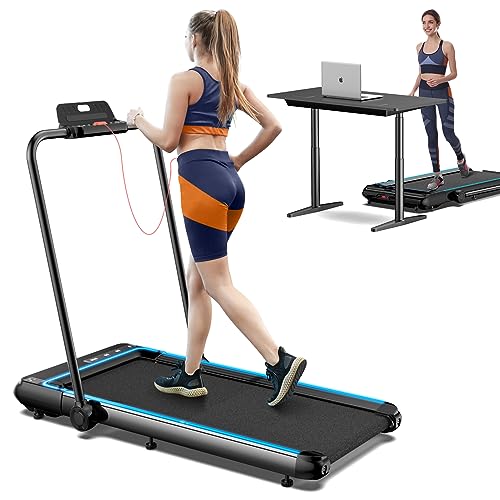7 Small Changes That Will Make A Big Difference In Your Tread Mill
Treadmills: A Comprehensive Guide to Understanding Their Functionality, Benefits, and Appropriate Selection
Introduction
Treadmills have ended up being a staple in contemporary fitness routines, both in homes and gyms worldwide. They use a convenient and efficient way to keep cardiovascular health, boost endurance, and assist in weight management. adelaminerva.top out the various kinds of treadmills, their benefits, features to consider when acquiring, and some FAQs to guide users in making informed decisions.
Kinds of Treadmills
When it pertains to choosing a treadmill, it is important to understand the different types available in the market. Here are the main classifications:
1. Manual Treadmills
- Mechanism: These treadmills have an easy style and depend on the user's efforts to move the belt.
- Pros: More affordable, quieter operation, no electrical energy required.
- Cons: Limited features, might not offer the same variety of exercise intensity.
2. Motorized Treadmills
- Mechanism: Powered by a motor that drives the belt, allowing users to walk or perform at a set speed.
- Pros: Greater range of speeds and slopes, geared up with many functions such as heart rate monitors and exercise programs.
- Cons: More pricey and may need more upkeep.
3. Folding Treadmills
- System: Designed for those with minimal space, these treadmills can be folded for simple storage.
- Pros: Space-saving, often motorized, versatile features.
- Cons: May be less resilient than non-folding models.
4. Commercial Treadmills
- System: High-quality machines created for usage in fitness centers and fitness centers.
- Pros: Built to withstand heavy use, advanced functions, typically consist of warranties.
- Cons: Pricey and not ideal for home use due to size.
5. Curved Treadmills
- Mechanism: A distinct style that enables users to propel the belt using their own energy.
- Pros: Offers a more natural running experience, promotes much better running kind.
- Cons: More pricey and can be noisier.
Treadmill Type
Pros
Cons
Handbook
Inexpensive, no electrical energy required
Limited features
Motorized
Range of speeds, advanced functions
Upkeep required
Folding
Space-saving, frequently motorized
May lack sturdiness
Business
Constructed to last, professional-grade features
Expensive
Curved
Natural running experience, promotes great kind
Greater rate
Benefits of Using Treadmills
Treadmills offer various advantages that can contribute to one's total health and fitness objectives. Some of these benefits consist of:
- Convenient Workouts: Treadmills permit users to exercise inside your home no matter weather.
- Cardiovascular Health: Regular usage can improve heart health by increasing endurance and promoting healthy flow.
- Weight Management: Effective for burning calories, which assists in weight-loss and management.
- Personalized Workouts: Users can control speed, incline, and duration to produce tailored workout experiences.
- Safety: Treadmills provide a foreseeable surface, minimizing the danger of falls compared to outdoor running.
- Multifunctional: Many treadmills included functions like heart rate monitors, workout programs, and even entertainment systems.
Selecting the Right Treadmill
When picking a treadmill, prospective buyers need to think about numerous crucial elements:
Features to Consider:
- Motor Power: Typically measured in horse power (HP), a motor strength of at least 2.5 HP is suggested for major runners.
- Belt Size: A longer and broader belt accommodates numerous stride lengths, supplying comfort throughout exercises.
- Slope Settings: Adjustable incline functions simulate outdoor hill running and can increase exercise strength.
- Weight Capacity: Ensure the treadmill can support the user's weight for safety and longevity.
- Console Features: Look for easy to use control panels, exercise programs, and Bluetooth compatibility for streaming music or other functions.
Budget Considerations
- Under ₤ 500: Entry-level manual treadmills appropriate for casual walkers.
- ₤ 500 – ₤ 1,500: Mid-range motorized treadmills that use more features and much better durability.
- ₤ 1,500 – ₤ 3,000: High-end designs with innovative technology, bigger motors, and longer warranties.
- Over ₤ 3,000: Commercial-grade treadmills perfect for frequent use in health clubs or training facilities.
Frequently Asked Questions (FAQs)
1. How often should I use a treadmill?
It is advised to use a treadmill at least 3 to 5 times a week, including numerous strength levels for best outcomes.
2. Can I lose weight by utilizing a treadmill?
Yes, consistent use of a treadmill can contribute to weight reduction, especially when integrated with a balanced diet and strength training.
3. What is the best speed to walk on a treadmill for novices?
A speed of 3 to 4 miles per hour is a suitable variety for newbies. It's important to start slow and slowly increase speed as convenience and stamina enhance.
4. Do I need to utilize a treadmill if I currently run outdoors?
Using a treadmill can provide fringe benefits, such as controlled environments and differed workouts (slope, periods) that are not constantly possible outdoors.
5. How do I maintain my treadmill?
Routine upkeep consists of lubing the belt, cleaning up the deck and console, and checking the motor for optimum efficiency.
Treadmills are necessary tools for those seeking to boost their fitness levels in a regulated and practical manner. With different types readily available, understanding their functions and advantages is essential for making a notified purchase. By considering individual workout needs, space schedule, and budget restrictions, individuals can find the most ideal treadmill that fits their way of life. Incorporating treadmill exercises into a balanced fitness routine can cause enhanced health outcomes and a satisfying exercise experience.
